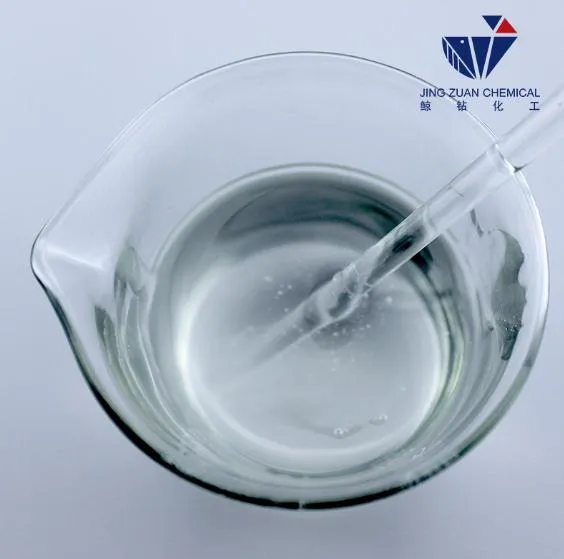
Dec . 23, 2024 15:12 Ku laabo liiska
A Guide to HPMC
Hydroxypropyl Methylcellulose (HPMC) is a versatile, plant-based compound commonly used across multiple industries, including construction, pharmaceuticals, food, and cosmetics. Known for its binding, thickening, and stabilizing properties, HPMC has become a key ingredient in various products and applications. In this guide, we'll explore the production of HPMC in factories, its wide range of uses, and where to buy HPMC.

What Is HPMC?
Hydroxypropyl Methylcellulose (HPMC) is a semi-synthetic polymer derived from cellulose, a natural polymer found in plant cell walls. This modified cellulose is produced by substituting hydroxyl and methyl groups onto the cellulose backbone, giving it unique properties such as water solubility, thickening ability, and gelling. Because it is derived from plant cellulose, HPMC is considered biodegradable and environmentally friendly.
Uses of HPMC
HPMC’s diverse properties allow it to be used in many industries. Here are some common applications:
1. Construction Industry
- Cement Additives: HPMC is used as a water-retaining agent in cement and plaster. It improves workability, prevents cracking, and extends the curing time.
- Tile Adhesives: It enhances the adhesion, flexibility, and water retention of tile adhesives and grouts.
- Joint Compounds: HPMC helps in creating smooth, easy-to-apply joint compounds used in drywall and plastering applications.
2. Pharmaceutical Industry
- Binders in Tablets: HPMC is commonly used as a binder and excipient in tablet formulations due to its ability to control the release rate of drugs.
- Capsules: It is used in the production of vegetarian capsules as an alternative to gelatin, providing a plant-based option for consumers.
- Controlled Release Systems: HPMC's gel-forming properties make it useful in controlled-release drug formulations.
3. Food Industry
- Thickening Agent: In foods, HPMC is used as a thickening agent in sauces, dressings, soups, and beverages. It improves texture and stability.
- Emulsifier: HPMC helps in creating stable emulsions in food products like ice cream and mayonnaise.
- Gluten-Free Baking: HPMC is often used in gluten-free baked goods to improve texture and provide structure.
4. Cosmetics and Personal Care
- Stabilizer in Creams and Lotions: HPMC is used in cosmetics to stabilize emulsions, ensuring a smooth and consistent product.
- Hair Care Products: It is found in shampoos and conditioners, where it helps to improve texture and spreadability.
- Face Masks and Gels: Used to thicken gels and masks, providing a desirable texture for easy application.
5. Other Industrial Uses
- Paints and Coatings: In the paint industry, HPMC serves as a thickener and stabilizer for emulsions, ensuring consistency and spreadability.
- Detergents: HPMC is used in detergent formulations as a thickening agent to improve cleaning efficiency.
HPMC Factory Production Process
The production of HPMC involves several key steps:
- Cellulose Extraction: Natural cellulose is extracted from wood or cotton pulp.
- Etherification Reaction: The extracted cellulose is chemically modified using a combination of chemicals, such as propylene oxide and methyl chloride, to introduce hydroxypropyl and methyl groups to the cellulose structure.
- Purification: After etherification, the product is purified to remove any residual chemicals and impurities.
- Drying and Granulation: The purified HPMC is dried and processed into powder form. Depending on the required specifications, the powder can be fine or coarse.
- Packaging: The finished HPMC is packaged for sale, ready for distribution to various industries.
Factories producing HPMC focus on maintaining high standards of quality control throughout the manufacturing process to ensure the consistency, purity, and effectiveness of the product.
Factors to Consider When Buying HPMC
When purchasing HPMC, it’s important to consider the following factors to ensure you’re buying the right product:
- Grade of HPMC: HPMC comes in various grades based on its use, including food-grade, pharmaceutical-grade, and industrial-grade. Ensure the product meets the required standards for your application.
- Viscosity: The viscosity of HPMC varies depending on the degree of etherification. Higher viscosity grades are often used in applications requiring thicker solutions, such as adhesives and paints.
- Purity and Additives: Check for any additives, fillers, or impurities, especially if the HPMC is intended for food or pharmaceutical use.
- Quantity: Consider the amount of HPMC you need. For small batches, you may purchase directly from suppliers, while larger quantities may be more cost-effective when bought in bulk directly from the factory.
- Price: Compare prices from different suppliers, but be mindful that cheaper products may not meet the desired quality standards. It’s best to balance cost with quality.
Hydroxypropyl Methylcellulose (HPMC) is a versatile and widely used compound in industries ranging from construction to pharmaceuticals. Understanding its production process, uses, and where to buy it can help businesses make informed purchasing decisions. Whether you need HPMC for a specific application or are looking to buy in bulk, working with reputable suppliers and manufacturers ensures you get high-quality, reliable products for your business.
-
Versatile Hpmc Uses in Different Industries
WararkaJun.19,2025
-
Redispersible Powder's Role in Enhancing Durability of Construction Products
WararkaJun.19,2025
-
Hydroxyethyl Cellulose Applications Driving Green Industrial Processes
WararkaJun.19,2025
-
Exploring Different Redispersible Polymer Powder
WararkaJun.19,2025
-
Choosing the Right Mortar Bonding Agent
WararkaJun.19,2025
-
Applications and Significance of China Hpmc in Modern Industries
WararkaJun.19,2025







